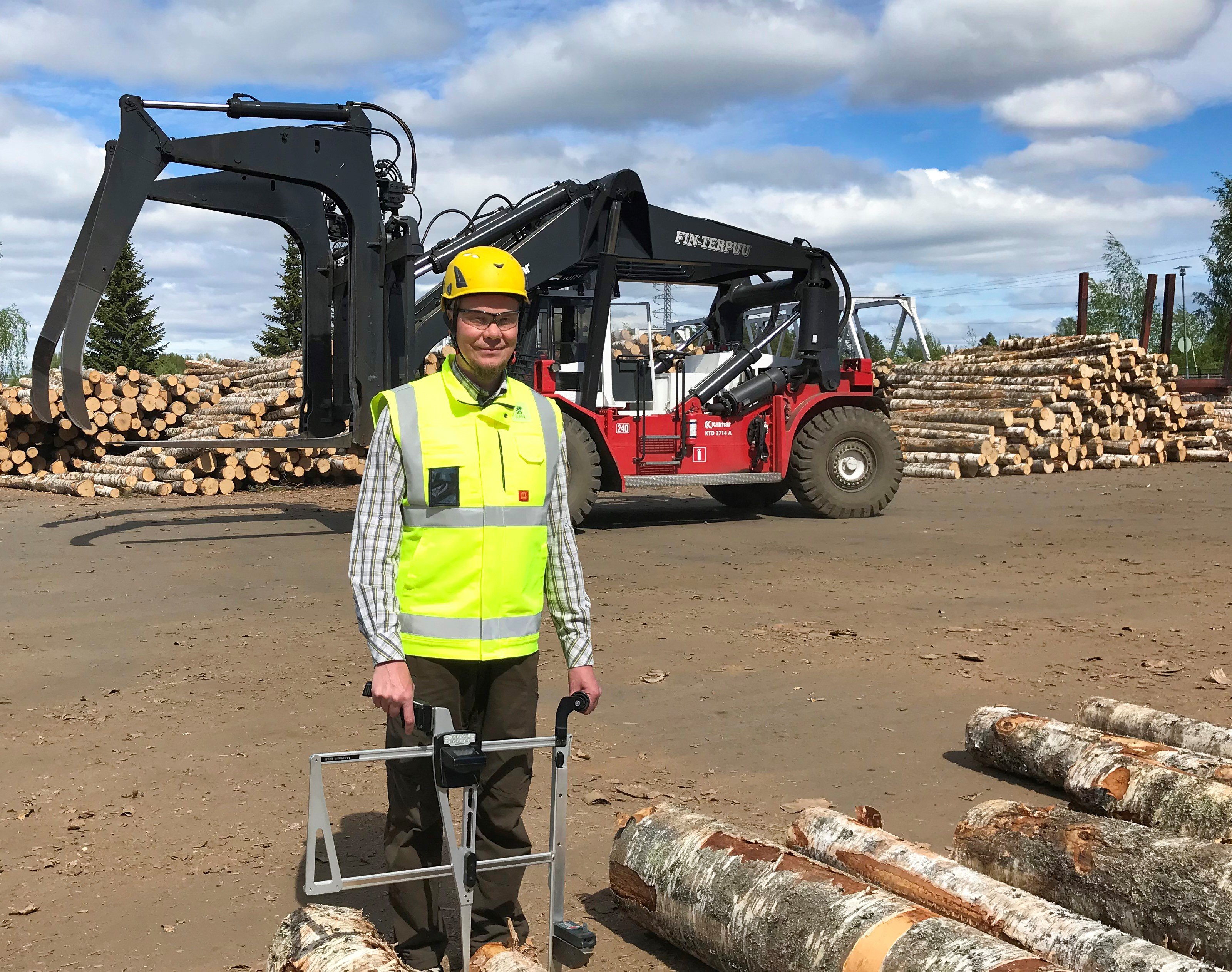
Every day around 10 truckloads of wood arrive at UPM Plywood's Joensuu Mill in Finland, most of it harvested from the nearby forests in North Karelia. The logs are delivered by UPM Forest and first received at the mill by Vesa Ala-aho, Manager for Wood Procurement.
Vesa assesses the logs' quality: the wood must be of the highest quality, as it will be used to make WISA birch plywood for demanding end-use applications in LNG carriers, and WISA-Trans for trailer floors.
The logs must meet certain dimensional and quality requirements in order to be suitable for making plywood.
“The logs must be at least 18 centimetres thick and they must not be too twisted, knotty, rotten or damaged. All defects are recorded and, if necessary, a complaint is made to the supplier,” Vesa explains. He has nearly 20 years of experience in working at the mill.
All the logs are measured with the log stacker’s weighing scales. Around 10 percent are selected randomly by a computer for more accurate measurement with callipers. Quality control at this stage is very important because poor quality wood will be difficult to rotary-cut later, leading to the unnecessary waste of raw material. “When the wood is of high quality, the production process is more efficient and the end product is more likely to be good too,” Vesa emphasises.
The wood used to manufacture plywood must always be fresh, which is particularly important when making LNG plywood. After receipt, the logs that meet the quality criteria are put to a soaking pond where they must be heated for at least a day and a half. Once the wood has been inspected, measured, and soaked, the actual plywood manufacturing can begin.
![]()
Our new “Behind the scenes” series introduces people working at UPM Plywood while providing a glimpse into modern plywood manufacturing.